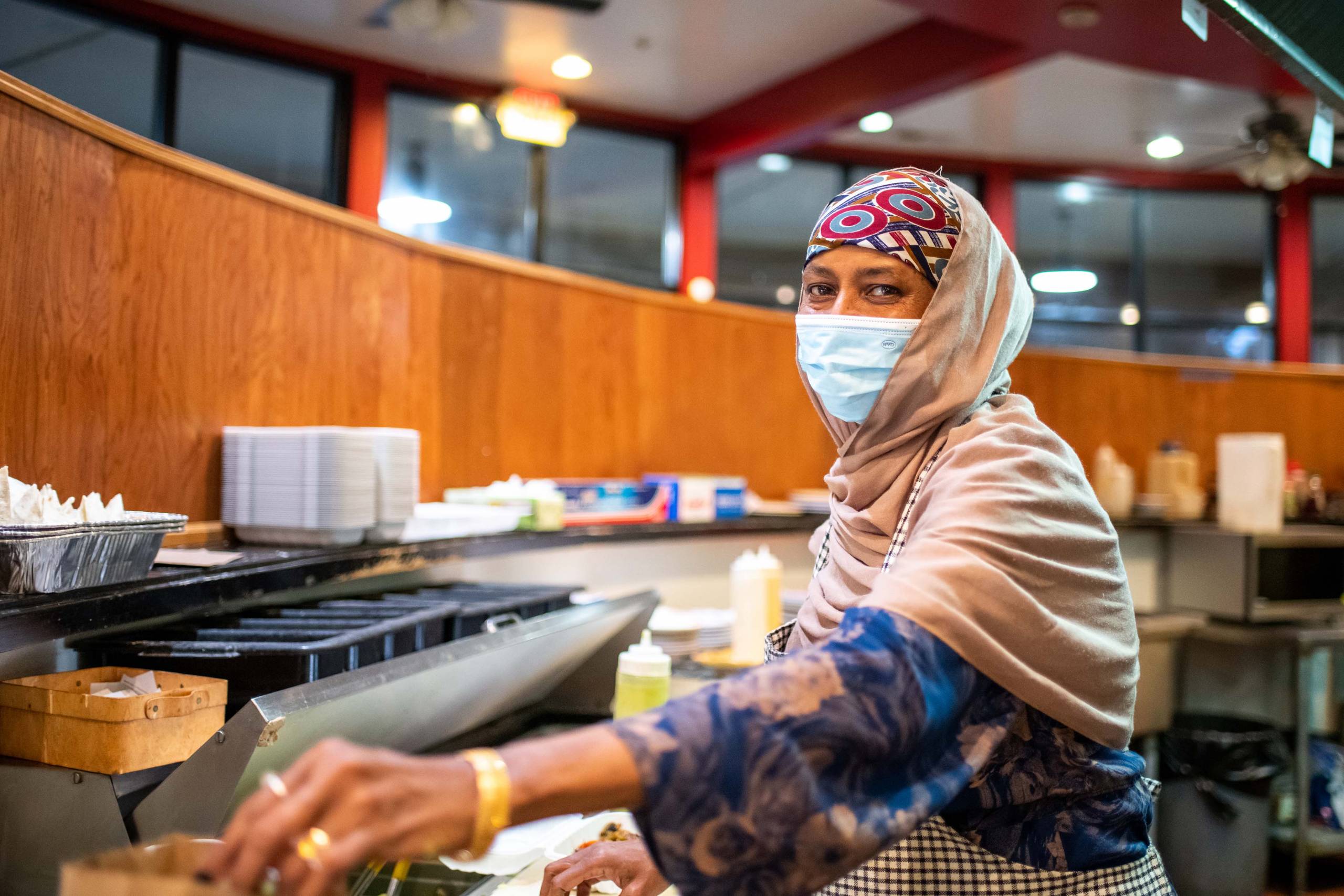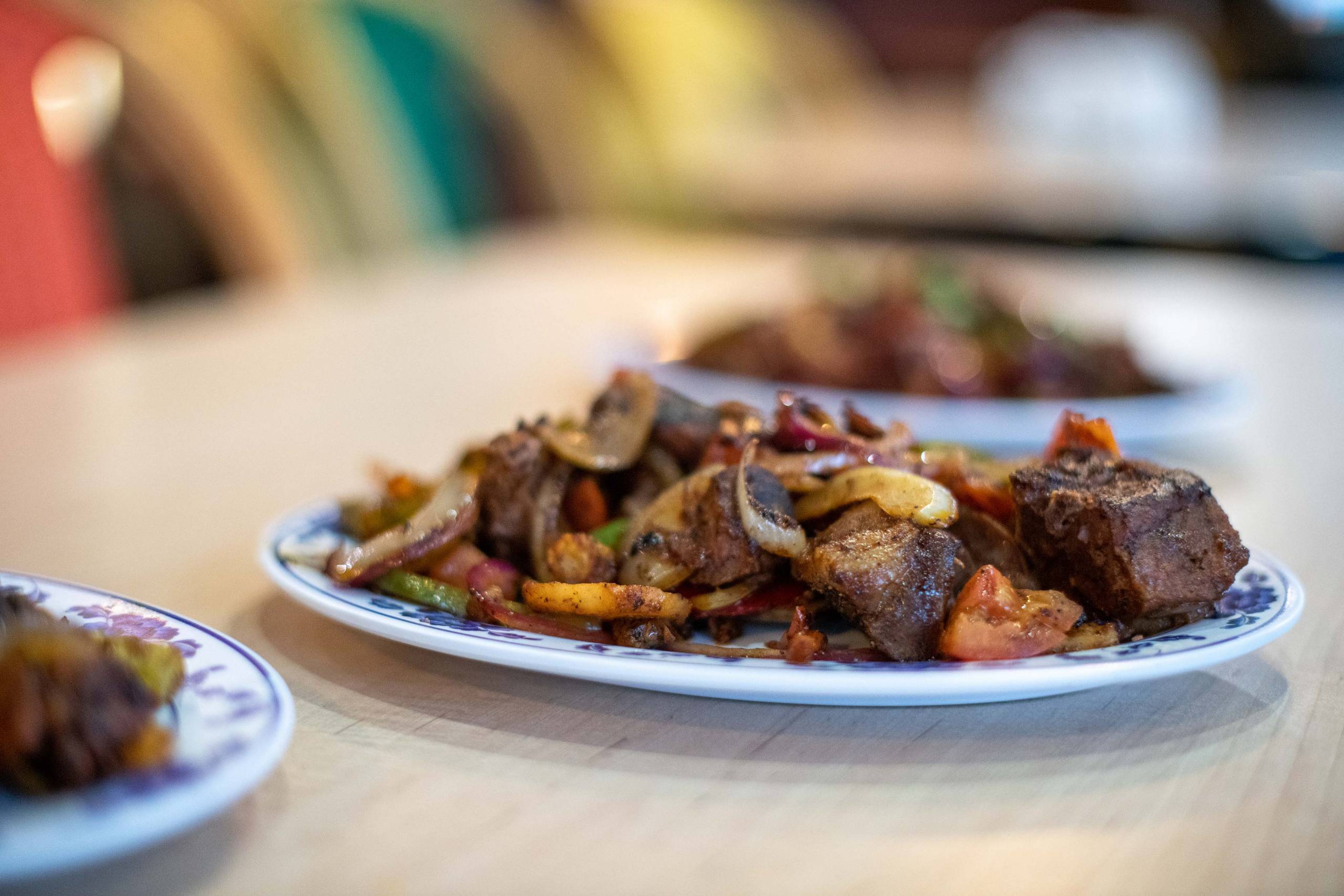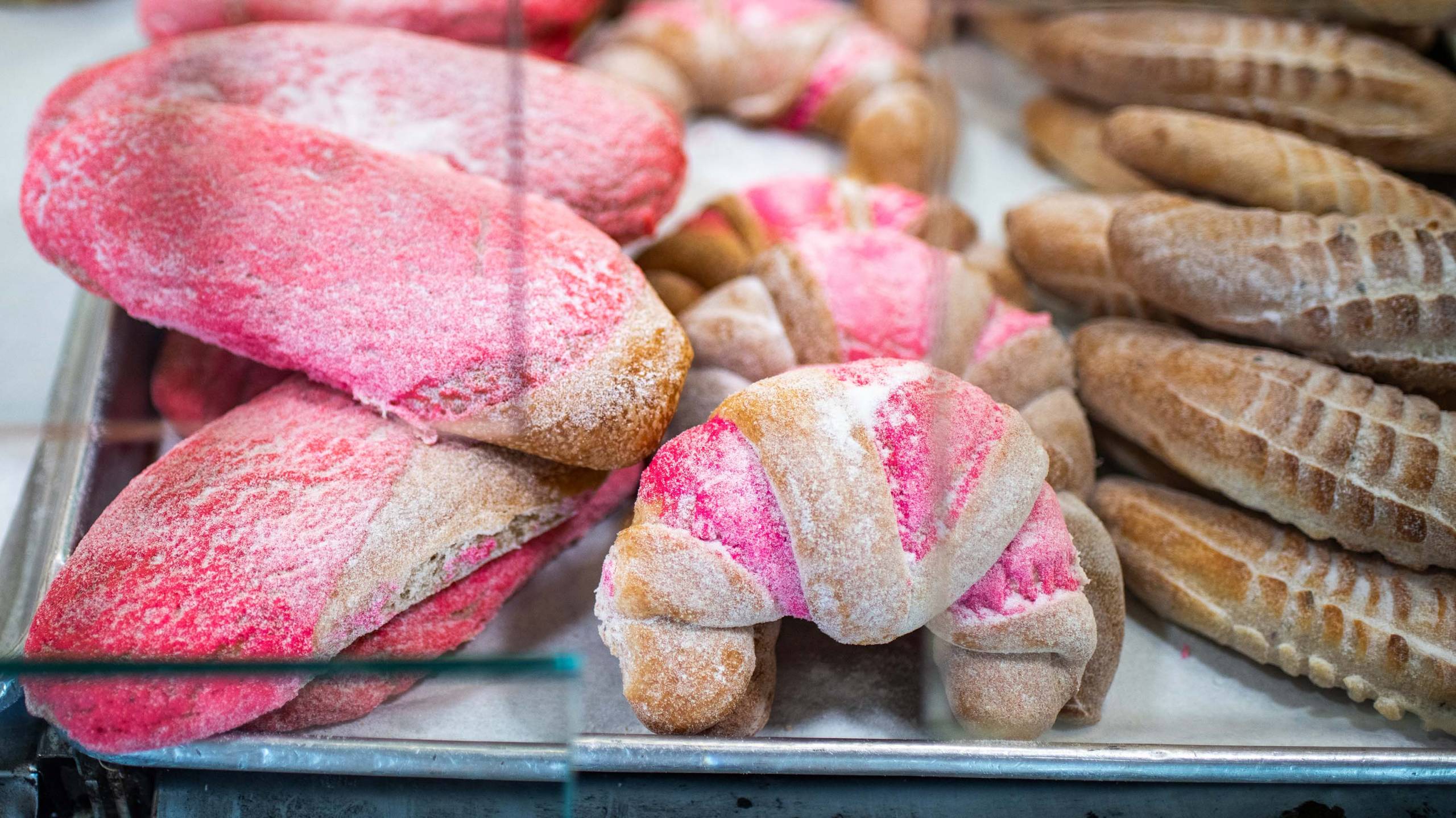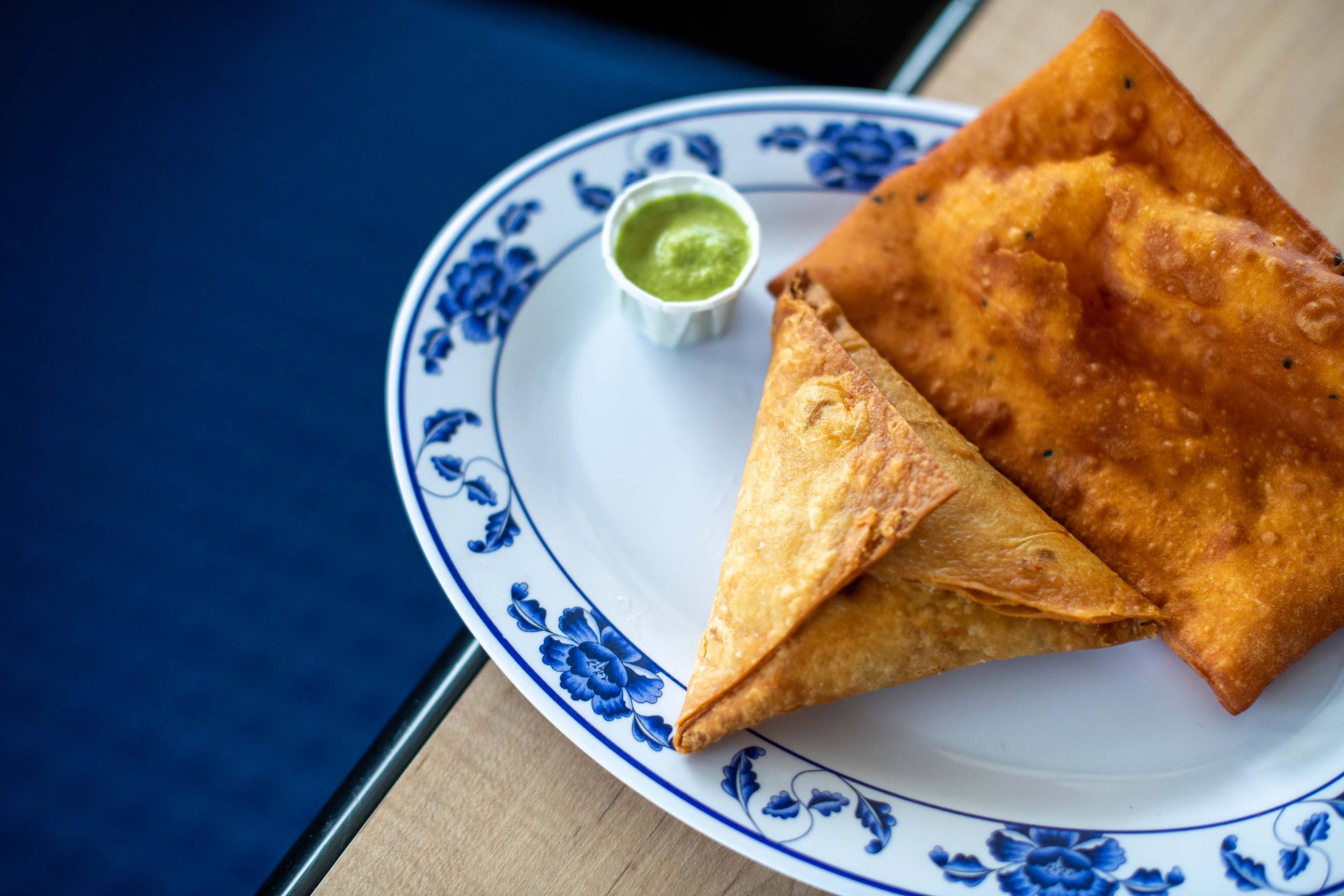San Jose Is the Bay Area’s Great Immigrant Food City
And because of the geographic proximity of these neighborhoods, all these immigrant kids wound up going to school together and learning about each other’s foods instead of staying cloistered in their own enclaves.
Thien Pham, a high school teacher and comics artist, was a kid when he arrived in the city in 1980, as part of the large wave of Vietnamese refugees who made their home in San Jose around that time—attracted, Pham says, by the weather and the prospect of good, dignified jobs in the burgeoning tech and electronics industries.
What he remembers is how enmeshed the different immigrant communities were. In particular, he says, “There was a real nice Mexican and Vietnamese cohabitation in San Jose. A lot of Vietnamese people got into eating Mexican food, and Mexican people got into eating Vietnamese food.” The flavors of the two cuisines were just so compatible—all these bold, spicy, saucy dishes served with rice.
One of Pham’s earliest restaurant memories was of the Vietnamese-Chinese noodle house Tung Kee, which was frequented almost exclusively by Vietnamese folks when it first opened on the ground floor of an apartment building. Now, it’s a successful chain, rebranded as TK Noodle, and Pham says whenever he goes to one of the San Jose locations, the dining room is always full of Mexican Americans: “I think that’s really neat.” Even in the multicultural Bay Area, it’s relatively rare to find that kind of confluence of different communities—but in San Jose, it just feels natural, Pham says.

For Sarah Ali, moving to the San Jose area when she was a kid was like day and night compared to her old life in New York, where, as Ali recalls, the weather was bad and there wasn’t much of a Somali community. San Jose, on the other hand, had a comparatively large Somali population that gathered every Friday at the masjid, or local prayer place, in Santa Clara. “It was nice to see other people who looked like me,” she says.
At the time, there wasn’t a Somali restaurant, though. And so, Ali’s mother, Amina Nur, opened Jubba Restaurant, which became a place where Somali Americans could introduce their culture to their friends. In the beginning, Ali says, Somali people were the only ones who ate there. But now? Now the restaurant brings in so many people of different backgrounds and ethnicities. Indeed, what Ali remembers about growing up in San Jose were all the different types of food she was exposed to as a kid: Indian, Italian, Afghan, Turkish, Thai.
“I feel like San Jose is the most diverse city in the whole world,” she says. “Honestly.”

I
f you want a taste of that diversity, all you need to do is bring a hearty appetite. A good food day in San Jose might start with one of the oversized conchas at Mexico Bakery, a little strip mall shop that holds the top spot in the city’s pantheon of great panaderías. Often still warm from the oven, the conchas are only surpassed by the bakery’s tortas, which rank among the finest and most monstrously sized in the entire Bay Area. One of them, the milanesa, contains—just barely!—no fewer than four layers of breaded steak, an entire avocado, a thick wedge of queso fresco and probably a half-dozen other fillings. It is a work of art.
From there, if you haven’t killed your appetite by eating more than half the sandwich, it’s a quick drive over to Pho Papa, which serves what’s probably my favorite pho in the Bay. You know the restaurant is serious about pho because there’s nothing else on the menu—no obligatory rice plates or imperial rolls. Just fresh noodles and the best-tasting, most clarifying broth. What Pho Papa is known for, however, is offering a whole, slow-simmered beef short rib as a preposterously rich accompaniment for your pho—a pho house trend that appears to have started in San Jose and still hasn’t extended very far outside its borders. Indeed, when it comes to what’s new and trendy in the Bay Area’s Vietnamese food scene, San Jose is where to go to stay ahead of the curve.

If you have time to kill before your next meal, you could do a lot worse than spend the afternoon exploring one of the two all-Vietnamese malls on the Eastside, Grand Century or Vietnam Town, where you can pick up fresh-pressed sugarcane juice and some pandan waffles to snack on.
Eventually, if you have a craving for Somali food (or are curious to try it), you might find yourself schlepping across town to yet another strip mall, this one tucked in a residential neighborhood next to a light rail station. There, at Jubba, almost everyone gets an order of the restaurant’s sensationally crispy and well-spiced sambusas before tucking into a big plate of beef or chicken suqaar (a slightly tangy, savory stir-fry studded with baby corn and crunchy water chestnuts), or roasted goat meat over rice. Every meal comes with a little chaser of very sweet, very gingery hot tea to aid your digestion for the trip back home.
All that food, and you haven’t even begun to dig into the city’s wealth of exceptional Japanese cuisine, or its enviable regional Chinese restaurant scene, or its deep roster of drop-dead delicious Ethiopian spots. This is the flip side to San Jose’s identity as the “Capital of Silicon Valley”: Even today, the tech industry continues to bring new immigrant populations into San Jose—and where there are large pockets of immigrants, there’s bound to be good food. So, now the city has great Korean restaurants too. It has excellent Indian and Pakistani restaurants.
As Pham, the comics artist, puts it, “Immigrants have always been able to sniff out the restaurants that are amazing no matter where they are.”

G
iven this abundance of riches, why, then, is San Jose so rarely mentioned in the broader discourse about great Bay Area food cities? Part of it might have to do with the city’s geography, which is vast and spread out, and, in many stretches, laid out more like a suburb—strip mall after strip mall after strip mall. Never mind that much of the most delicious food in the U.S. can be found in suburban strip malls. San Jose’s immigrant enclaves just don’t fit the popular image of what an urban ethnic neighborhood ought to look like: There is no Chinatown equivalent.
Then there’s the fact, again, that the tech industry has become such a huge part of the city’s identity.
“I think we get overshadowed by Silicon Valley,” says Yosimar Reyes, a San Jose-based poet and activist who grew up in a mostly Mexican apartment complex in East San Jose. “Oftentimes we don’t really focus on what the ethnic makeup is of this city and who the subgroups and populations are that create the culture.”
Cities like Oakland and San Francisco have a certain cultural cachet, Reyes explains, due to their vibrant, long-established, diverse arts scenes. Historically, San Jose hasn’t had that kind of foundation—instead, it has “tech”—which spills over into how people think of the food scene: that it must be dull, that it must cater mainly to wealthy suburbanites. But now, Reyes says, that cultural landscape is changing too, with a new generation of visual artists, musicians and poets like himself. “We’re seeing the resurgence of local San Jose artists that are really making things happen and creating that culture for young people to see themselves in the city.”
And if the food media, at large, has a blind spot when it comes to the San Jose food scene, it’s at least in part because the only restaurants that send out press releases all seem to be located at Santana Row, San Jose’s splashy, behemothic outdoor mall that opened in the early 2000s. Designed to evoke the fountains and cobblestone streets of Europe, the mall exudes the simulacrum of charm—like a Downtown Disney—with its palm trees and vast swaths of outdoor seating. There’s food and culture here too, but it’s presented in the shiny package of an upscale chain restaurant or a celebrity chef’s fourth or fifth side venture. It’s a “non-place,” as one of my colleagues put it, where you can eat your poke bowl outdoors while facing a Tesla showroom or a Kate Spade boutique. (When the topic of Santana Row came up, every San Jose person I spoke to made the same scoffing sound.)







